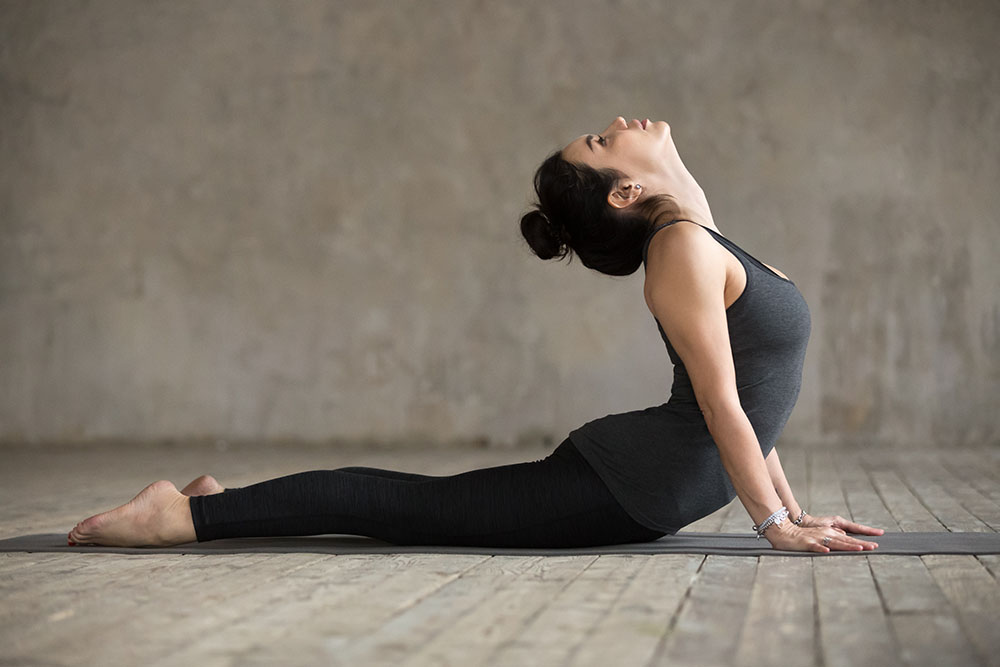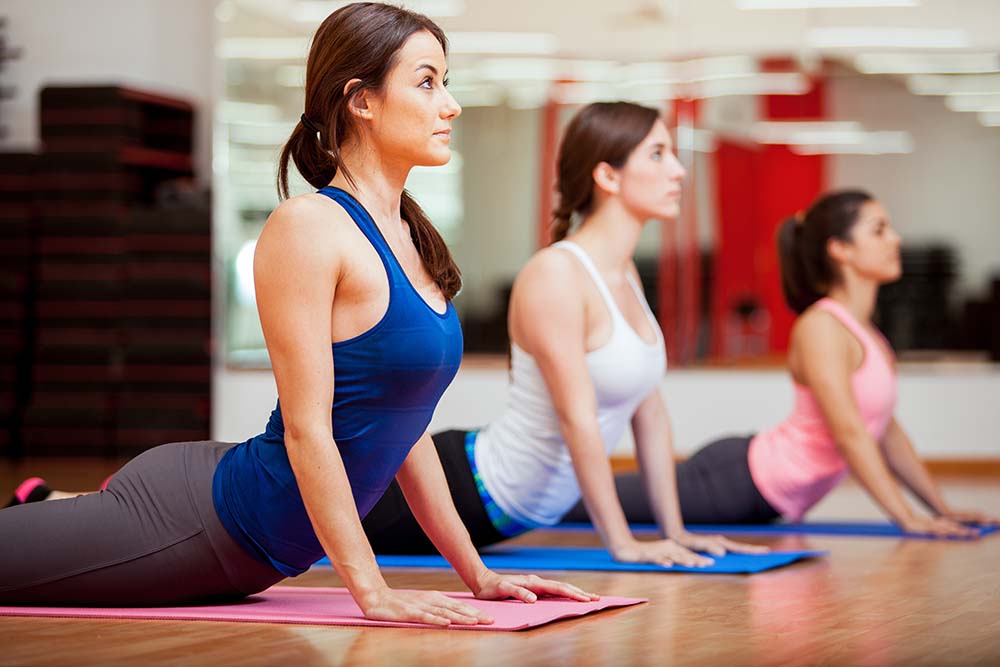What is bhujangasana and what are its benefits? This has been a trending question for a long time. Bhujangasana, or cobra pose, is a classic yoga pose that offers numerous physical and mental benefits. It is a great pose to start a yoga practice with, as it stretches the spine, arms, and chest while toning the abdominal muscles. Additionally, the bhujangasana benefits an individual by improving flexibility and posture. It is also known to reduce stress and tension, increasing blood flow to the brain and relaxing the nervous system.
Physically, bhujangasana is good for improving digestion, reducing back pain and strengthening the lungs. It is also believed to help regulate hormones and improve heart health. Finally, the pose can build self-confidence and help foster a sense of inner peace. All in all, bhujangasana is an incredibly beneficial pose that people of all ages can enjoy. The physical, mental and spiritual benefits will only become more evident with regular practice.
This blog further covers the benefits of bhujangasana yoga, expert tips, and a step-by-step guide to forming posture. So, if you are one of those people who are looking for a detailed answer to ‘what are the benefits of bhujangasana?’ read this till the end.
Posture Formation
Bhujangasana or the cobra pose is a simple pose to perform, but it can be quite challenging and requires concentration. The posture is formed by lying on the stomach, arching the back upwards, and looking up. This allows for a deep stretch of the spine and back muscles and a deep breath that can help to calm the mind.
The bhujangasana is good for improving posture, strengthening the back muscles, reducing anxiety, and increasing flexibility. It can also help to improve digestion, reduce menstrual cramps, and improve circulation. It is an excellent pose to practice if one is looking to reduce chronic fatigue or if one simply wants to improve their overall physical and mental well-being. With regular practice, the Bhujangasana can help to bring many amazing benefits.
It does not matter if one is a professional or a beginner in yoga. They can learn this pose in a few minutes by following the below-mentioned guide or watching a video online.
The above sections cover a brief answer to ‘What is bhujangasana and its benefits?’ Going further, we are going to learn how to perfectly form posture.
Step-By-Step Instructions for The Posture
Bhujangasana and its benefits may change depending on how one performs the pose. To practice the cobra pose (bhujangasana) correctly, follow these steps -
1. Start by lying face down on the mat with legs extended behind and toes pointing backwards. Place both hands on the mat next to the shoulders with elbows bent and close to the body.
2. Inhale and lift the head and chest off the mat, keeping the pelvis and thighs on the ground. Arch the back, keeping the shoulders down and away from the ears.
3. Now, lift the hands off the mat and straighten the arms, pressing the palms into the ground and lifting the chest higher.
4. Keep the neck stretched forward and gaze forward or up slightly. Hold the pose for 30 seconds or one minute, breathing deeply.
5. Finally, to release the pose, exhale and lower the hands and chest back to the mat. Relax for a few breaths in the adho mukha svanasana (downward facing dog pose) before continuing with the practice.
Remember to keep the core engaged and the lower back lifted while holding the pose. If one has any lower back injuries or problems, it is important to listen to the body and not push the body too hard. It can be problematic later on. In such cases, it might be helpful to start with a modified version of the pose, such as keeping the hands on the mat next to the chest for support.

Cautions and Contradictions
Bhujangasana benefits the body in a variety of ways. However, as with any physical activity, it is important to be mindful of any potential causes for concern or contradictions. Some people may want to avoid the cobra pose or modify it if they have the following conditions.
● Neck problems like spondylitis
● Carpal tunnel syndrome
● Headache or dizziness
● Those who have had an abdominal surgery
● Those who have severe spine-related problems
It is always a good idea to check with a healthcare provider or yoga instructor if one has any such concerns about their ability to practice the cobra pose.
Before moving forward to read ‘what are the benefits of bhujangasana’, try these few modifications to the pose.
Modifications of Bhujangasana
Several modifications can be made to the Bhujangasana (cobra pose) to make it more accessible or suitable for anybody.
1. Place a blanket or block under the pelvis and thighs to lift the lower body off the ground. This can help to reduce strain on the lower back and make it easier to lift the chest.
2. Keep the hands on the mat next to the chest for support, rather than lifting them off the ground.
3. Use a strap looped around the upper arms, just above the elbow, to help lift and open the chest.
4. Practice the pose with bent knees to reduce the intensity on the lower back.
5. Try the modified cobra pose, also called the makarasana or the baby cobra pose, which involves lifting only the upper chest and head off the ground.
11 Bhujangasana Benefits
‘What are the benefits of Bhujangasana?’ The advantages of bhujangasana are not limited to 11 but here we will look at the top 11 benefits. Bhujangasana or the cobra pose offer several benefits to a healthy individual. Here are 11 potential benefits of practicing Bhujangasana:
1. It strengthens the muscles of the back, arms and legs
2. It improves flexibility and mobility in the spine
3. It stretches the chest, shoulders and abdomen
4. It increases blood flow to the abdominal organs
5. It eases symptoms of asthma
6. It relieves lower back pain
7. It reduces stress and fatigue
8. Bhujangasana is good for improving digestion
9. It increases energy and stamina
10. It tones the buttocks
11. Bhujangasana is good for improving posture
Please note that individual results regarding the advantages of bhujangasana may vary and they may not be experienced by everyone. In such cases, try to make any necessary modifications to find a version of the pose that feels comfortable and safe for oneself. Bhujangasana and its benefits are different as per the bodily conditions.

Expert Tips on Doing Bhujangasana
Here are a few expert tips for attaining the most benefits of bhujangasana yoga.
1. Start by warming up with a few rounds of cat-cow pose (marjaryasana-bitilasana) to prepare the spine for the cobra pose.
2. Keep the pelvis and thighs firmly on the ground while lifting the chest and the head. This will help protect the lower back.
3. Engage the core muscles to support the lower back and lift the chest higher.
4. Press down through the palms and lift the chest and head upwards, rather than pushing with the hands.
5. Keep the shoulders down and away from the ears, and gaze forward or slightly upwards.
6. While holding the pose, for a minute or some seconds, breathe deeply and evenly.
Who Must Avoid Doing Bhujangasana?
The answer to ‘what is the benefit of bhujangasana’” may vary from person to person. It is a relatively gentle yoga pose, but certain individuals should avoid doing it or modify the way they perform it.
Individuals with the following conditions should avoid doing the Bhujangasana or perform it with caution:
● Recent or chronic back injury
● Ulcers or hernia
● Pregnancy (since it may put pressure on the abdominal area)
● Carpal tunnel syndrome or wrist injury
● Glaucoma or other eye disorders (since the pose requires looking upward)
● Any kind of injury or pain in the spine or shoulders
● If someone has vertigo or balance issues
Bhujangasana and its benefits are not significant in people who have recently undergone surgery. They may try to avoid this pose for at least 6-8 weeks after the surgery.
Book a consultation or talk with a doctor or physical therapist before starting any new exercise program. In case of any discomfort or extreme pain, stop immediately and switch to an easier version of yoga asanas.
Also, a beginner should always practice this pose under the guidance of a trained yoga instructor. They will help in ensuring that the person is performing the pose correctly and safely.
Conclusion
Here is one more answer to ‘what is the benefit of bhujangasana?’ When you compromise to original postures, your entire forward and backward process gets affected. You will have to do Bhujangasana from a certain point which is achieved by way of doing many other asanas. But when you perform Bhujangasana as an independent posture. You can seek the advantages of all its benefits at one time by doing it easily and comfortably. It is said that Bhujangasana is the fountain of youth because it keeps age away and rejuvenates the cells of your body, thereby adding health to one's life with stamina and vigour.
We hope this blog answers all the questions as to what is Bhujangasana and its benefits.
FAQs
Which type of people should avoid bhujangasana?
People who have undergone surgery, have severe spine-related problems, have balance issues or any kind of eye disorders are proven to not receive any benefits of bhujangasana yoga, and may also end up making the condition worse.
What is the benefit of bhujangasana?
Advantages of bhujangasana - improves flexibility, tones the buttocks, increases energy, relieves back pain and strengthens the muscles.
What is bhujangasana and its benefits for the chakras?
Ans. Bhujangasana or cobra pose is a gentle yoga pose,which activates and balances the Vishuddha chakra (the throat chakra) and the Anahata chakra (the heart chakra).
What is the benefit of bhujangasana for our organs?
Bhujangasana posture improves the functioning of the kidney and liver. It also tones the body and the spinal nerves.
What are the benefits of bhujangasana yoga for curing diseases?
Bhujangasana improves ovarian function and cures arthritis, which is a common rheumatic condition in older people.